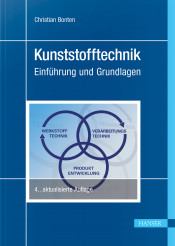Veranstaltungsdetails
Konferenz vom 31.03.2009 bis 01.04.2009
Ort/Land: Phoenix, Arizona, The Crowne Plaza San Marcos Resort, USA
Kontakt: Margit Korsak (mk@amiplastics-na.com)
Polymers are an essential component of power and telecommunications cables. Ram Ramachandran of Dow Wire and Cable, David Kiddoo of Alphagary Corporation, Dr Jennifer Rust of Borealis and Andreas Farkus of ABB will be talking about their experience with medium and high voltage power cables at a conference organised by Applied Market Information: Polymers in Cables 2009 takes place March 31 to April 1 at the Crowne Plaza San Marcos Golf Resort in Phoenix, Arizona. Dr Zhuang Xiong of Yangtze Optical Fiber and Cable Co. and Edward Murphy of DSM Desotech will describe some recent developments in fiber optics.
There is significant growth in the NAFTA cables industry, driven by investment in power infrastructure. Increased investment by utility companies in medium and high voltage power cables will underpin growth in the power cable sector in NAFTA. Growth in these power cables has been particularly strong in Canada, the Southern States of the USA and Mexico. Inter-material competition within the cables compounds insulation and jacketing markets will continue to affect market shares. According to Kerry Satterthwaite at AMI Consulting, world wire and cable revenues achieved a steady annual average growth rate of 13% between 2002 and 2008, despite the slowdown in late 2008. The strongest regional growth in the medium term will be felt in Asia, CIS and the Middle East, but the more mature markets of NAFTA and Europe continue to grow. At the conference Andrew Reynolds, Research Director at Applied Market Information, will aim to put material, regulatory and technology developments in the cables industry into context.
The traditional insulation and jacketing materials in the NAFTA market were vinyls and polyethylenes but these materials are being replaced with XLPE, LSF0H, fluoropolymers and others. Polyone and Alphagary are key suppliers of LSF0H materials. Arkema has vast expertise in HFFR formulations. DSM Engineering Plastics has developed new high performance copolyesters for demanding cable applications and Kabelwerk Eupen is testing nanotechnology in this field.
The conductors within cables must be carefully protected and isolated from any other conductors and from the environment so that no short circuiting can possibly occur. Insulation is put around these conductors in a cable to make sure that this does not happen. Most wire and cable insulations are made of polymers (plastics) which are electrically resistant to the flow of an electric current. The jacket is the outermost layer of a wire or cable and the main function of this layer is to protect the conductor and insulation, both from physical force and in the ingress of anything that could cause chemical deterioration (e.g. air and/or water). Wire and cable insulation and jacketing is constantly being improved. Material selection and high standards of extrusion technology are critical to the functional protection provided.
Maag Pump Systems Textron and Beta Lasermike have developed new cables machinery to maintain profit margins in this competitive and mature industry.
Quality control and high standards in cable extrusion plants and during installation all contribute to keeping power and telecom lines fully operational. Keith Donahue of Zumbach Electronics has developed process troubleshooting methodology.
Insulation and jacketing is a critical field for the wire and cable industry and it brings together cable extruders, specifiers, raw material suppliers and equipment manufacturers to the industry. The AMI conference provides a global forum to debate the current technical issues and market developments (www.amiconferences.com).
(Beschreibung nach Veranstalterangaben)
1210 Broadcasting Road, Suite #103
Wyomissing, PA 19610
Tel.: +1 610-478-0800
Fax: +1 610-478-0900





 Wir informieren Sie schnell, umfassend und kostenlos über das, was
in der Branche passiert.
Wir informieren Sie schnell, umfassend und kostenlos über das, was
in der Branche passiert.

